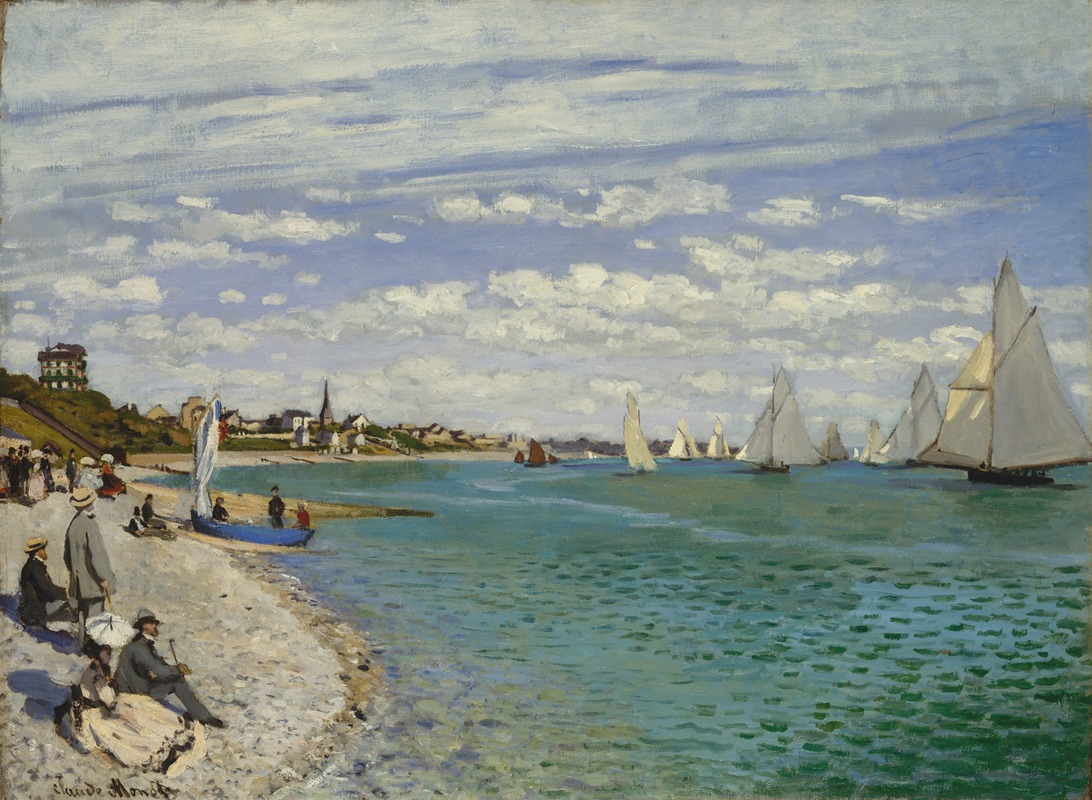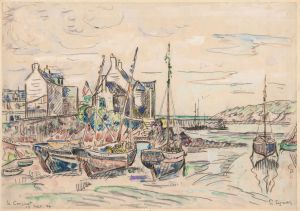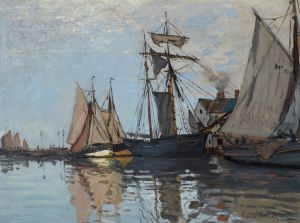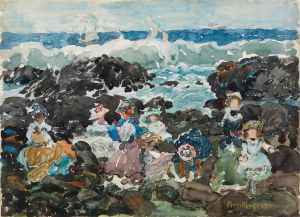
Regatta at Sainte-Adresse
A hand-painted replica of Claude Monet’s masterpiece Regatta at Sainte-Adresse, meticulously crafted by professional artists to capture the true essence of the original. Each piece is created with museum-quality canvas and rare mineral pigments, carefully painted by experienced artists with delicate brushstrokes and rich, layered colors to perfectly recreate the texture of the original artwork. Unlike machine-printed reproductions, this hand-painted version brings the painting to life, infused with the artist’s emotions and skill in every stroke. Whether for personal collection or home decoration, it instantly elevates the artistic atmosphere of any space.
"Regatta at Sainte-Adresse" is an oil painting created by the renowned French Impressionist artist Claude Monet in 1867. This artwork is a notable example of Monet's early exploration of light, color, and atmosphere, which would later become defining characteristics of the Impressionist movement.
The painting depicts a regatta, or boat race, taking place off the coast of Sainte-Adresse, a seaside resort near Le Havre in Normandy, France. Sainte-Adresse held personal significance for Monet, as it was a place where he spent part of his youth and where his family owned a summer house. The scene captures a lively and vibrant moment, with numerous sailboats dotting the water, their sails billowing in the wind. The composition is balanced by the presence of spectators on the shore, who are observing the event.
Monet's use of color in "Regatta at Sainte-Adresse" is particularly striking. He employs a palette of bright, vivid colors to convey the effects of sunlight on the water and the sails. The blues of the sea and sky contrast with the whites and creams of the sails, while touches of red and green add vibrancy to the scene. This use of color not only captures the natural beauty of the setting but also reflects Monet's interest in the transient effects of light and atmosphere, a theme that he would continue to explore throughout his career.
The painting also demonstrates Monet's skillful handling of perspective and composition. The diagonal arrangement of the boats creates a sense of depth and movement, drawing the viewer's eye into the scene. The horizon line is placed high in the composition, emphasizing the expanse of the sea and sky. This approach to composition was innovative for its time and contributed to the development of Impressionist techniques.
"Regatta at Sainte-Adresse" is housed in the Metropolitan Museum of Art in New York City, where it is part of the museum's extensive collection of 19th-century European paintings. The painting is considered an important work in Monet's oeuvre, as it marks a period of transition in his artistic development. During the 1860s, Monet was moving away from the more traditional styles of painting that dominated the art world and was beginning to experiment with the techniques that would later define Impressionism.
The painting was exhibited at the Salon of 1868, an annual art exhibition in Paris that was one of the most prestigious venues for artists at the time. Although Monet's work was not always well-received by the conservative critics of the Salon, "Regatta at Sainte-Adresse" was noted for its fresh approach to landscape painting.
In summary, "Regatta at Sainte-Adresse" is a significant work by Claude Monet that captures the artist's early experimentation with light, color, and composition. It reflects both his personal connection to the Normandy coast and his emerging style that would later influence the Impressionist movement. The painting remains an important piece in the study of Monet's artistic evolution and the broader history of Impressionism.


















